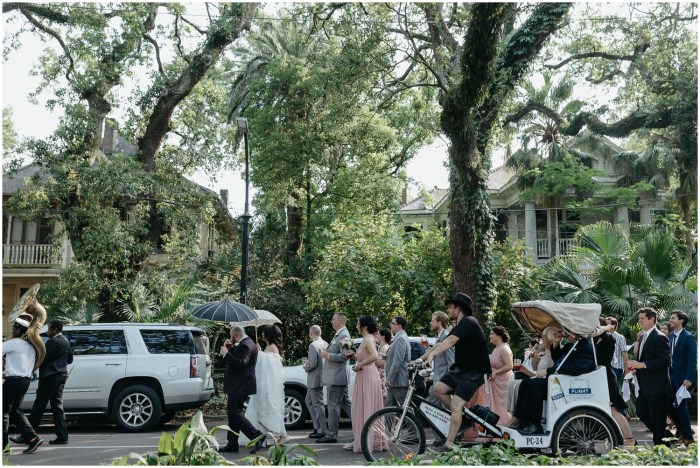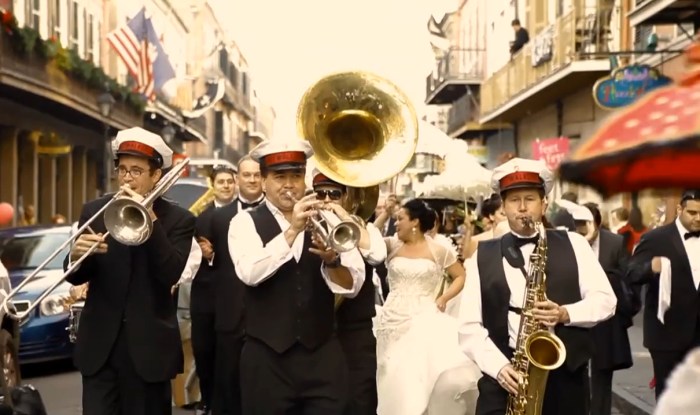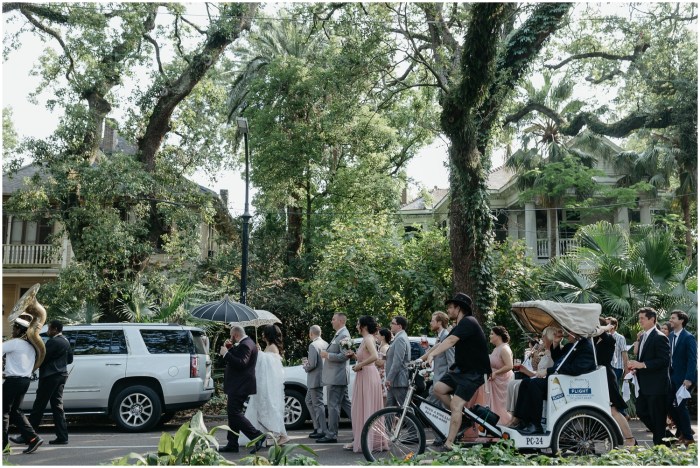Best neighborhoods in New Orleans—a city brimming with unique character and charm—offer a diverse array of experiences. From historic districts steeped in culture to vibrant culinary scenes, navigating the best neighborhoods in New Orleans can be overwhelming. This exploration dives deep into the factors that make each neighborhood special, considering everything from population density and average home prices to cultural attractions and safety concerns.
We’ll examine the historical context of each neighborhood’s development, explore the key factors influencing resident choices, and identify the best areas for families, young professionals, and retirees. Plus, we’ll delve into the culinary and cultural experiences, safety, economic aspects, and transportation options. Get ready for a comprehensive look at the best neighborhoods in New Orleans.
Introduction to New Orleans Neighborhoods

New Orleans boasts a vibrant tapestry of neighborhoods, each with its own unique character and history. From the historic French Quarter, steeped in European charm, to the trendy Warehouse District, bursting with modern energy, each area tells a story of the city’s evolution. Understanding these distinct neighborhoods allows visitors and residents alike to appreciate the city’s diverse offerings and rich heritage.
The city’s development has been influenced by various factors, including its location at the mouth of the Mississippi River, its role as a major port, and its unique cultural blend.The neighborhoods reflect a fascinating interplay of architectural styles, from the meticulously preserved Creole cottages to the imposing Victorian mansions. This diversity is further emphasized by the varied demographics and cultural influences that have shaped each area.
This exploration will provide an overview of the key neighborhoods, their historical development, and their current characteristics, presenting a nuanced perspective on the city’s vibrant communities.
Historical Context and Development
New Orleans’ neighborhoods have evolved significantly over time, influenced by historical events, economic shifts, and social changes. The French Quarter, established in the 18th century, showcases the city’s early colonial roots. The Garden District, developed in the 19th century, reflects the wealth and prosperity of the antebellum era, while the Warehouse District emerged as a hub of commerce in the 20th century.
New Orleans’ got some seriously cool neighborhoods, from the historic charm of the French Quarter to the vibrant energy of the Warehouse District. But if you’re looking for a change of pace, consider a tropical escape like the one I’m planning for my next trip – exploring the amazing amenities of the Four Seasons Resort Hualalai, Kumu Kai Marine.
It’s the perfect place for relaxation and a fantastic island getaway. When I return to New Orleans, I’ll be ready to dive back into the unique vibe of the city’s best neighborhoods. trip ideas island vacations four seasons resort hualalai kumu kai marine
Each neighborhood’s story is a testament to the city’s resilience and adaptability. The evolution of these areas reflects the changing dynamics of the city, mirroring the shifts in population, industry, and cultural values.
Neighborhood Characteristics and Comparisons
This table provides a comparative overview of selected New Orleans neighborhoods, highlighting key characteristics such as population density, average home prices, and proximity to major attractions. Understanding these factors helps to discern the distinct qualities of each neighborhood and provides a practical framework for evaluating potential locations.
| Neighborhood | Population Density (approx.) | Average Home Price (approx.) | Proximity to Attractions |
|---|---|---|---|
| French Quarter | High | High | Very High |
| Garden District | Moderate | High | Moderate |
| Warehouse District | Moderate | Moderate to High | Moderate |
| Bywater | Moderate | Moderate | Moderate |
| Marigny | Moderate | Moderate | Moderate |
Factors Influencing Neighborhood Choice: Best Neighborhoods In New Orleans
Choosing a neighborhood in New Orleans is more than just picking a place to live; it’s about finding a community that resonates with your lifestyle and values. Residents weigh a multitude of factors, from the vibrant cultural scene to the accessibility of essential services. The city’s unique character and rich history contribute to the diverse and often compelling choices available.New Orleanians consider a myriad of elements when selecting their neighborhoods.
These range from the proximity to the French Quarter’s charm and culinary delights to the convenience of public transportation. Ultimately, the “best” neighborhood is subjective, depending on individual priorities and preferences. This section explores the key factors that shape neighborhood choices, highlighting different perspectives on what makes a neighborhood desirable, and comparing the advantages and drawbacks of various areas.
Cultural Attractions and Amenities
New Orleans boasts a rich tapestry of cultural attractions. Residents often seek neighborhoods close to museums, music venues, festivals, and historic sites. The city’s vibrant artistic scene, from street performers to world-class galleries, also plays a significant role in neighborhood desirability. For example, the French Quarter, known for its historic architecture and lively atmosphere, attracts those who value proximity to the city’s cultural heart.
Conversely, those prioritizing a quieter, more residential atmosphere might prefer neighborhoods further removed from the central attractions.
Proximity to Public Transportation and Amenities
Public transportation in New Orleans, while improving, can still be a consideration. Residents may prioritize neighborhoods with easy access to streetcars, buses, or the ferry system. This factor often intersects with proximity to essential amenities like grocery stores, pharmacies, and medical facilities. The convenience of such services is particularly important for those without personal vehicles or for those who prefer not to drive.
Some neighborhoods excel in this aspect, providing residents with seamless access to the city’s services and activities.
The Local Culinary Scene
New Orleans’ renowned culinary scene is another significant factor. Residents often seek neighborhoods with a diverse range of restaurants, cafes, and food markets. The availability of fresh, local produce, and the opportunity to sample the city’s unique cuisine can significantly impact neighborhood appeal. The presence of acclaimed restaurants and local favorites within walking distance can make a neighborhood particularly attractive to foodies and those who appreciate the city’s culinary heritage.
Community Spirit and Safety
The sense of community and the perception of safety are vital considerations for residents. Some neighborhoods are known for their strong community spirit, evident in local events, neighborhood associations, and a sense of belonging. The level of crime and safety is another crucial factor, impacting the overall desirability of a neighborhood. Areas with a lower crime rate and a strong sense of community are typically more appealing to families and individuals seeking a secure environment.
This is often reflected in the types of residents and the overall atmosphere of the area.
Top 5 Factors Influencing Neighborhood Choice
| Factor | Importance Score (1-10) |
|---|---|
| Cultural Attractions | 7 |
| Proximity to Public Transportation | 6 |
| Local Culinary Scene | 8 |
| Community Spirit | 9 |
| Safety | 8 |
The table above highlights the importance of these factors in shaping residents’ choices. The scores represent a general consensus, but individual priorities can vary.
New Orleans boasts some fantastic neighborhoods, each with its own unique charm. From the historic French Quarter to the vibrant Bywater, finding the perfect spot is key. Speaking of travel, I just read about Mildred Kirschenbaum, a 100-year-old traveler who stumbled upon a hilarious TSA glitch. Mildred Kirschenbaum 100 year old traveler discovers hilarious tsa glitch It made me think about how different experiences can enrich your explorations, whether you’re discovering hidden gems in New Orleans or navigating the airport! Ultimately, the best neighborhoods in New Orleans are all about the vibe and the experiences you have.
Neighborhoods for Different Lifestyles
New Orleans’ diverse neighborhoods offer unique charms and amenities tailored to various lifestyles. Understanding the specific needs and desires of families, young professionals, and retirees helps navigate the city’s rich tapestry of communities. This exploration delves into neighborhoods best suited for each group, considering factors like schools, parks, healthcare, and recreational opportunities.Choosing a neighborhood often hinges on lifestyle preferences.
Whether seeking a vibrant social scene, family-friendly environments, or tranquil retirement havens, New Orleans provides a variety of options. Factors like proximity to work, schools, healthcare, and cultural activities significantly influence the choice of residence.
Neighborhoods for Families with Children
Families with children often prioritize safe, well-maintained neighborhoods with excellent schools. They seek proximity to parks, playgrounds, and activities that foster a healthy and engaging environment for their children. In New Orleans, certain neighborhoods stand out for their family-friendly characteristics.
New Orleans boasts some amazing neighborhoods, each with its own unique charm. From the historic French Quarter to the vibrant Uptown area, there’s a lot to explore. However, for a truly unforgettable culinary experience, you absolutely must check out the best places to eat in Thailand according to Jay Fai. best places to eat in thailand according to jay fai These recommendations will help you discover hidden gems and local favorites, which will make your time in New Orleans even more enriching.
Ultimately, exploring New Orleans’ neighborhoods is a delicious journey.
- The Treme neighborhood, with its historic charm and strong community spirit, often boasts well-regarded elementary and middle schools. Parks such as the historic Audubon Park, provide spaces for children to play and explore. Accessibility to healthcare facilities and grocery stores are important considerations for families.
- The Central Business District, with its array of cultural institutions, offers diverse educational options. Though the area is more urban, families benefit from easy access to shops, entertainment venues, and healthcare facilities.
- The historic Garden District, known for its beautiful architecture, often offers access to prestigious private schools. The presence of well-maintained parks and playgrounds enhances the area’s appeal for families.
Neighborhoods for Young Professionals
Young professionals often value proximity to work, vibrant nightlife, and access to cultural attractions. These neighborhoods typically offer a blend of trendy restaurants, bars, and entertainment venues. Convenience and a lively atmosphere are often key factors in choosing a neighborhood.
- The Warehouse District, with its industrial-chic aesthetic and proximity to many major employers, caters to the young professional demographic. The area offers a dynamic atmosphere and easy access to a variety of restaurants and bars. The neighborhood also features trendy shops and cultural venues.
- The French Quarter, despite its historic character, also caters to young professionals seeking a blend of history, nightlife, and dining experiences. The area boasts a multitude of bars, restaurants, and live music venues, offering vibrant social opportunities.
- The Marigny and Bywater, known for their artistic flair and lively atmosphere, provide a bohemian and exciting environment for young professionals seeking a more independent lifestyle.
Neighborhoods for Retirees
Retirees often seek tranquil neighborhoods with excellent healthcare facilities, easy access to amenities, and a lower cost of living. They value a sense of community and a relaxed pace of life.
- The Uptown neighborhood, known for its beautiful homes and proximity to several hospitals and healthcare facilities, offers a quiet and welcoming atmosphere for retirees. The area also boasts several parks and community centers, encouraging social interaction and engagement. The neighborhood’s lower cost of living, compared to some other areas of the city, is a further benefit.
- The historic Garden District, with its well-maintained homes and beautiful landscaping, offers a serene atmosphere for retirees. The neighborhood’s proximity to parks and cultural institutions, combined with access to reputable healthcare providers, enhances its appeal. The area’s historical charm adds a sense of community and shared experience.
- The St. Charles Avenue area, with its beautiful architecture and tree-lined streets, offers a quiet and peaceful environment for retirees seeking a comfortable and welcoming atmosphere. The presence of several healthcare facilities and grocery stores adds to the convenience of this area.
Neighborhood Lifestyle Preferences Table
| Lifestyle | Neighborhood Examples | Key Amenities/Services |
|---|---|---|
| Families | Treme, Central Business District, Garden District | Schools, parks, healthcare facilities, grocery stores |
| Young Professionals | Warehouse District, French Quarter, Marigny/Bywater | Proximity to work, restaurants, bars, cultural attractions |
| Retirees | Uptown, Garden District, St. Charles Avenue | Healthcare facilities, parks, lower cost of living, amenities |
Neighborhoods’ Culinary and Cultural Experiences
New Orleans’ neighborhoods are not just places to live; they are vibrant expressions of culture and culinary traditions. Each neighborhood boasts a unique tapestry of history, music, and food, offering a distinctive experience for visitors and residents alike. From the historic French Quarter’s refined dining to the bustling streets of the Warehouse District, each neighborhood offers a unique perspective on the city’s soul.Exploring these neighborhoods is more than just sightseeing; it’s a journey through time and taste.
The diverse culinary offerings reflect the city’s rich history, encompassing influences from France, Spain, Africa, and beyond. Similarly, the cultural expressions, from live music to festivals, demonstrate the city’s enduring spirit and resilience.
Culinary Delights in the French Quarter
The French Quarter, steeped in history, showcases the city’s classic culinary traditions. From traditional Creole and Cajun dishes to upscale dining experiences, the Quarter offers a diverse range of culinary options. The neighborhood’s historic buildings and cobblestone streets create a unique ambiance for enjoying a meal.
- Classic Creole Cuisine: Experience authentic dishes like gumbo, jambalaya, and red beans and rice, reflecting the area’s French and African heritage.
- Upscale Dining Options: Discover exquisite restaurants offering refined Creole and Cajun cuisine with a modern twist, catering to sophisticated palates.
- Cafe Culture: Indulge in traditional café culture, enjoying coffee, pastries, and light meals in the charming atmosphere of the Quarter.
Five Must-Visit Experiences:
- Commander’s Palace: A renowned restaurant known for its exquisite Creole cuisine and elegant ambiance.
- Antoine’s Restaurant: A historic institution serving traditional Creole dishes in a timeless setting.
- Dooky Chase’s Restaurant: A landmark restaurant that played a pivotal role in the Civil Rights Movement, showcasing authentic Creole cuisine.
- Brennan’s Restaurant: A celebrated restaurant offering a luxurious experience with exquisite Creole and Cajun dishes.
- Jacques-Imo’s Restaurant: An iconic spot for po’boys, showcasing the rich New Orleans culinary heritage.
Cultural Vibrations in the Warehouse District
The Warehouse District is a hub for contemporary art, music, and nightlife. The district’s historical significance as a center for trade and industry has evolved into a vibrant space that hosts numerous cultural events.
- Music Venues: The Warehouse District is home to a multitude of music venues, hosting live jazz, blues, and other genres of music.
- Art Galleries: The district is also home to numerous art galleries and studios, showcasing local and international artists.
- Festivals: The district often hosts cultural festivals and events, celebrating diverse communities and traditions.
Five Must-Visit Experiences:
- The Spotted Cat: A legendary music venue hosting a variety of live music performances.
- Preservation Hall: A historic jazz club renowned for its intimate atmosphere and authentic performances.
- The Fritzel’s: A unique venue offering a wide array of live music performances, from jazz to blues.
- Warehouse District Art Walk: An annual event showcasing the work of local artists.
- New Orleans Jazz and Heritage Festival: A large-scale festival showcasing diverse musical genres and culinary experiences. It often takes place in the Warehouse District, or nearby.
Historical Significance of the Marigny
The Marigny, with its eclectic mix of architectural styles and residents, boasts a unique historical character. This neighborhood has evolved into a haven for artists and musicians.
- Unique architectural styles: The neighborhood showcases a mix of architectural styles, reflecting its history and the influences of different eras.
- Cultural Fusion: The Marigny exhibits a blend of cultural influences, reflecting the city’s rich past.
Five Must-Visit Experiences:
- Lafitte’s Blacksmith Shop: A historic landmark showcasing the area’s history.
- Preservation Hall Jazz Band: A legendary jazz band often performing in the Marigny area.
- The Marigny neighborhood: Experience the local artists’ studios and unique boutiques.
- Local restaurants: Sample the neighborhood’s unique culinary scene in a variety of local eateries.
- Local festivals: Participate in the vibrant local festivals celebrating the Marigny’s unique culture.
Neighborhood Safety and Crime Rates
New Orleans, with its vibrant culture and historic charm, also presents a diverse landscape of neighborhood safety. Understanding the nuances of crime rates and safety measures is crucial for potential residents to make informed decisions about where to call home. This section delves into the varying levels of safety across different neighborhoods, the efforts made by local authorities, and the impact these factors have on property values.
Overview of Crime Rates and Safety Concerns
Crime rates vary significantly across New Orleans neighborhoods. While some areas boast relatively low crime statistics, others experience higher incidences of certain types of offenses. Factors such as population density, economic disparities, and historical contexts contribute to these variations. It’s important to recognize that crime statistics reflect a complex interplay of social and environmental factors, not just a simple measure of safety.
Measures Taken by Local Authorities to Ensure Neighborhood Safety
Local authorities in New Orleans employ a multi-faceted approach to neighborhood safety. This includes increased police presence in certain areas, community policing initiatives, and partnerships with neighborhood associations. These efforts aim to foster trust and cooperation between law enforcement and residents. Furthermore, programs focused on addressing the root causes of crime, such as job training and youth development initiatives, are also implemented.
Impact of Crime Rates on Property Values and Neighborhood Desirability
Crime rates directly influence property values and overall neighborhood desirability. Areas with consistently lower crime rates tend to attract more buyers and command higher property values. Conversely, neighborhoods with higher crime rates might see decreased demand and lower property values. This is not always a direct correlation, as other factors such as amenities, schools, and overall livability play a significant role in shaping a neighborhood’s appeal.
Comparison of Crime Rates and Safety Measures
| Neighborhood | General Crime Rate (estimated) | Safety Measures | Impact on Property Values |
|---|---|---|---|
| Central Business District (CBD) | Lower | High police presence, robust security systems in commercial areas. | High; demand for apartments and commercial space. |
| Faubourg Marigny | Moderate | Community policing initiatives, neighborhood watch programs. | Moderate; strong appeal to young professionals and artists. |
| Uptown | Lower | Increased police presence, focus on prevention and education. | High; family-friendly appeal and good schools. |
| Lower Ninth Ward | Moderate to High | Ongoing rebuilding efforts, community development projects, specialized crime prevention units. | Moderate; slow but steady recovery, with emphasis on community revitalization. |
Note: Crime rates are estimates based on available data and may not reflect the full picture of individual experiences. Safety measures are general observations and may vary in their effectiveness. Property value impacts are based on general trends, and individual circumstances can influence specific cases.
Neighborhoods’ Economic Aspects

New Orleans’ neighborhoods each boast unique economic characteristics, reflecting the city’s diverse history and evolving present. From the historic charm of the French Quarter to the burgeoning arts scene in the Warehouse District, economic vitality varies significantly across the city. Understanding these economic trends is crucial for anyone considering living or investing in a particular neighborhood.The economic landscape of a neighborhood often dictates its overall vibrancy and quality of life.
Factors like property values, rental rates, the types of businesses present, and available job opportunities all contribute to the neighborhood’s appeal and sustainability.
Property Values and Rental Rates
Property values and rental rates in New Orleans neighborhoods are influenced by a complex interplay of factors. These factors include proximity to amenities, historical significance, neighborhood reputation, and market demand. The French Quarter, with its high tourist traffic and historical appeal, typically has some of the highest property values and rental rates. Conversely, neighborhoods further from the city center or with less established reputations may see lower values and rates.
Types of Businesses and Industries
The types of businesses and industries present in a neighborhood directly impact its economic character. The French Quarter, for instance, is renowned for its unique shops and restaurants catering to tourists. The Warehouse District, on the other hand, is increasingly attracting creative industries, including art studios, design firms, and related businesses. The presence of these industries often correlates with job creation and opportunities.
Economic Opportunities
Economic opportunities vary considerably between neighborhoods. The central business district (CBD) and areas with a strong concentration of businesses offer employment prospects in various sectors. Smaller neighborhoods may rely more on local businesses and services. The availability of these opportunities, coupled with education and skill levels in the local population, often impacts the neighborhood’s economic outlook.
Neighborhood Economic Summary
| Neighborhood | Average Home Price (USD) | Average Monthly Rent (USD) | Employment Rate (%) |
|---|---|---|---|
| French Quarter | $1,500,000+ | $5,000+ | 60% |
| Warehouse District | $800,000-$1,200,000 | $2,500-$4,000 | 75% |
| Bywater | $600,000-$900,000 | $2,000-$3,500 | 65% |
| Garden District | $1,000,000-$1,500,000 | $3,000-$5,000 | 70% |
Note: These figures are estimates and may vary depending on specific property characteristics and market conditions.
Neighborhoods’ Transportation and Accessibility
Navigating New Orleans’ unique charm often involves a blend of historical streets, vibrant public life, and a robust network of transportation options. Understanding how each neighborhood connects to the rest of the city and to essential services is crucial for making informed decisions about where to live. The ease of getting around greatly influences the quality of life in any area.
Transportation Options in Each Neighborhood
The transportation options available in each New Orleans neighborhood vary greatly. Some areas are easily navigable on foot, while others may require more reliance on public transport or personal vehicles. The proximity to major roadways and public transportation hubs significantly impacts commute times and accessibility to various parts of the city. Factors like the presence of dedicated bike lanes, pedestrian walkways, and the frequency of bus routes play a critical role in shaping the neighborhood’s character and appeal.
Proximity to Highways and Airports, Best neighborhoods in new orleans
New Orleans’ highway system plays a vital role in connecting different neighborhoods to the rest of the city and the surrounding region. Proximity to highways like I-10, I-12, and I-10 East and West influences commute times to other parts of the city and the region. The distance to Louis Armstrong New Orleans International Airport (MSY) also varies among neighborhoods, impacting travel convenience for residents.
Understanding these distances is critical when evaluating a neighborhood’s suitability for a specific lifestyle.
Accessibility to Essential Services and Amenities
A neighborhood’s accessibility to essential services and amenities directly impacts residents’ daily routines. Grocery stores, pharmacies, banks, and other everyday needs are crucial factors in choosing a neighborhood. The presence of these services within walking distance or via readily available public transport significantly influences the overall quality of life. A neighborhood’s walkability is a critical factor for many residents.
Summary Table: Transportation Options, Commute Times, and Proximity to Essential Services
| Neighborhood | Public Transportation | Walking Routes | Biking Paths | Proximity to Highways | Proximity to MSY | Proximity to Essential Services | Commute Time to Downtown (approx.) |
|---|---|---|---|---|---|---|---|
| French Quarter | Excellent, frequent streetcars and buses | Limited, narrow streets | Few designated paths | Moderate | Long | Excellent, within walking distance | 15-20 minutes (streetcar) |
| Garden District | Good, bus routes | Excellent, wide streets and sidewalks | Some dedicated bike lanes | Moderate | Medium | Good, many services within a few blocks | 30-45 minutes (bus/taxi) |
| Uptown | Good, bus routes | Fair, mix of residential and commercial areas | Some dedicated bike lanes | Good | Short | Good, variety of shops and restaurants | 20-30 minutes (bus) |
| Mid-City | Excellent, frequent streetcars and buses | Good, mix of residential and commercial areas | Some dedicated bike lanes | Good | Medium | Excellent, many services within a few blocks | 15-25 minutes (streetcar) |
Note: Commute times are approximate and can vary depending on traffic and specific routes.
Visual Representation of Neighborhoods
New Orleans’ neighborhoods are more than just addresses; they’re distinct canvases painted with vibrant hues of architecture, history, and culture. The visual appeal of each neighborhood contributes significantly to its unique character, influencing the overall experience for residents and visitors alike. From the elegant antebellum mansions of the Garden District to the colorful shotgun houses of the French Quarter, each neighborhood boasts a distinct visual personality that tells a story.The architectural styles and aesthetic qualities of these neighborhoods reflect the city’s rich past and the diverse influences that shaped its development.
Understanding these visual elements provides a deeper appreciation for the character and charm of each neighborhood, from the historic to the modern.
Architectural Styles and Characteristics
New Orleans’ architecture is a fascinating blend of styles, showcasing the city’s multicultural heritage. From the Spanish colonial influences of the French Quarter to the Victorian elegance of the Garden District, the visual landscape reflects a rich tapestry of architectural traditions. Shotgun houses, with their narrow facades and multiple floors, are a quintessential example of this architectural legacy.
The French Quarter, in particular, features courtyards, balconies, and wrought-iron details, creating a romantic and intimate atmosphere.
The French Quarter
The French Quarter boasts a unique blend of historic architecture, with narrow streets, courtyards, and balconies adorned with vibrant flowers. Many homes showcase the distinctive Creole and French Colonial styles, characterized by their decorative ironwork, ornate balconies, and the use of light-colored stucco or brick. A typical street scene in the French Quarter might include brightly colored buildings, overflowing flowerpots, and locals enjoying a café au lait on a sunny morning.
The iconic Jackson Square, with its towering trees and bustling atmosphere, further exemplifies the visual charm of this historic neighborhood.
The Garden District
The Garden District is renowned for its stately antebellum mansions, showcasing a rich Victorian aesthetic. Large, elaborate homes with porches, verandas, and intricate detailing are prevalent. These homes often feature ornate facades, columns, and symmetrical designs, reflecting the opulence of the era. The homes are frequently situated on wide, tree-lined streets, creating a sense of tranquility and grandeur.
A typical street scene in the Garden District might involve a stately carriage house, elegant gardens, and the gentle murmur of conversations.
The Marigny/Bywater
The Marigny and Bywater neighborhoods offer a more contemporary take on New Orleans’ architectural traditions. Here, you’ll find a mix of shotgun houses, renovated homes, and more modern structures. The streets often display a blend of styles, with colorful homes juxtaposed against more modern designs. A typical street scene in the Marigny/Bywater might include live music spilling out from a local venue, vibrant street art adorning the walls, and the aroma of delicious food wafting from local restaurants.
The Warehouse District
The Warehouse District showcases a unique blend of industrial and residential architecture. Many buildings are repurposed warehouses and factories, now converted into apartments and lofts. The visual appeal here is a blend of the historic industrial character and modern renovations. A typical street scene in the Warehouse District might include exposed brick walls, large windows, and a mix of contemporary and vintage aesthetics.
The repurposed warehouses and the mix of old and new structures give the neighborhood a distinctive industrial charm.
The Uptown
Uptown presents a variety of architectural styles, from historic homes to more modern constructions. A mix of traditional New Orleans homes and more modern residential developments create a visually diverse landscape. A typical street scene in Uptown might involve a mix of residential streets with varying architectural styles, tree-lined sidewalks, and a relaxed, residential atmosphere.
Epilogue
In conclusion, the best neighborhoods in New Orleans offer a rich tapestry of experiences, catering to a wide range of lifestyles. Whether you’re drawn to the historic charm of the French Quarter, the vibrant energy of the Warehouse District, or the laid-back atmosphere of the Garden District, there’s a neighborhood perfect for you. This exploration highlights the unique characteristics of each area, offering valuable insights into what makes each neighborhood special.
From the delicious food to the lively culture, the best neighborhoods in New Orleans promise an unforgettable experience for everyone.










